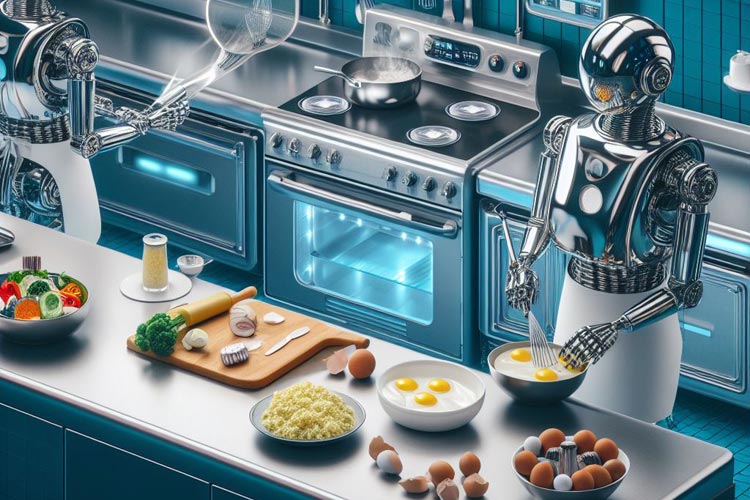bWyse Blog ~ What We're Hooting About!
Below you will find a wealth of Internet Marketing information.
We blog three times per week - check back often for latest and greatest internet marketing information.

In the vast arena of technological advancements, robotics remains one of the most dynamic and rapidly evolving fields. From simple automated machines to sophisticated humanoid robots, the journey of robotics has been nothing short of remarkable. As robots evolve, the need for them to perform intricate tasks has grown. Toyota, a brand synonymous with automotive excellence, has taken a pioneering step in this direction with its groundbreaking "kindergarten for robots" initiative.
Traditional robot training methods often involve long hours of coding, debugging, and testing. The process, although effective, is time-consuming and may not always yield the desired level of dexterity. At the heart of Toyota's training methodology lies the concept of "haptic demonstrations". Here, a human researcher manually operates a robot, guiding it through various tasks. As the robot is manipulated, it captures every nuance of the movement using a combination of cameras and haptic sensors. This process is akin to a human apprentice learning by watching and feeling the actions of a trainer. Once the demonstration is complete, the captured data is processed and integrated into an AI model. This model, built on a "diffusion policy", then generates physical actions for the robot based on the sensor data it has accumulated. The beauty of this method is the speed at which robots can learn new behaviors. Instead of weeks or even months of traditional training, a robot can now pick up a new skill in a fraction of the time.
While the methodology sounds promising on paper, its real-world application is even more impressive. Recent reports suggest that the Toyota Research Institute (TRI) has been using this kindergarten for robots to teach robots one of the most intricate tasks - making breakfast. Now, preparing breakfast might sound simple to us, but for a robot, it involves a multitude of complex tasks. Pouring milk without spilling, spreading jam without tearing the bread, and flipping pancakes without them landing on the floor are challenges that require a great deal of dexterity and precision. By incorporating a generative AI approach and providing the robots with a sense of touch, TRI has been successful in teaching these robots to navigate the complexities of breakfast preparation.
This initiative by Toyota is not an isolated experiment; it's a part of a grander vision. The company aims to advance the realms of AI and robotics to such an extent that these robots can potentially master over a thousand different skills by 2024. Imagine a world where robots are not just limited to industrial tasks but can assist in household chores, eldercare, and even gourmet cooking! Furthermore, Toyota's endeavors are setting a benchmark in the competitive landscape of robotics. Tech titans like Google and Tesla are also delving into similar research, indicating a future where dexterous robots might become commonplace.
While we might not have access to the complete details of Toyota's robotic endeavors due to occasional technical glitches, the glimpses we've seen are nothing short of revolutionary. Those keen on diving deeper into this fascinating world of robot kindergartens and breakfast-making machines can explore Toyota Research Institute's official channels for the latest updates.
In an era where automation is progressively becoming a part of our daily lives, Toyota's "kindergarten for robots" is a testament to the incredible potential of robotics and AI. It's not just about machines learning new tasks; it's about reshaping the future of human-robot collaboration.